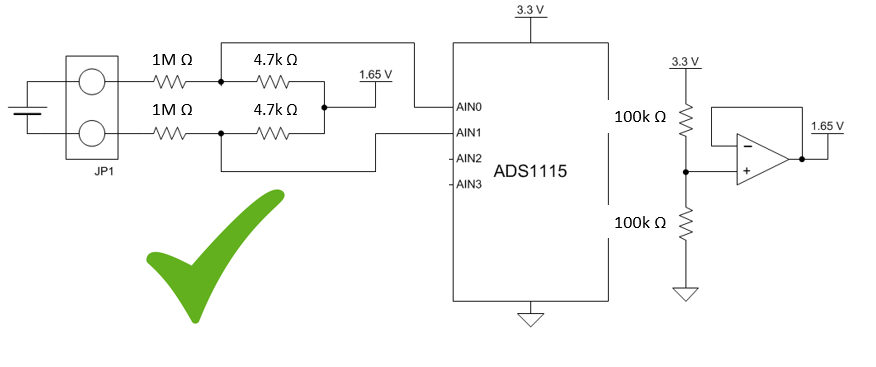Other Parts Discussed in Thread: OPA333
I want to measure battery set cell voltages using Arduino & ADS1115 in differential measurement mode. The user may put the probes across the battery cells either in positive/negative polarities hence, can I use the following circuit for interfacing with ADS1115? Plz suggest me if any better ideas & also the best op-amp model... Thanks in advance




